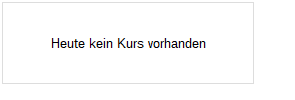
GEMFIELDS PLC - JORC Code compliant Resource and Reserve
PR Newswire
London, October 2
Gemfields plc
("Gemfields", "the Group" or "the Company")
Gemfields announces positive JORC Code compliant resource and reserve update and underground mining feasibility study for its Kagem emerald mine in Zambia
2 October 2012
______________________________________________________________________________
Highlights:
Resource Update
- JORC Code compliant Indicated Mineral Resources of 2.75 million tonnes or
1.0 billion carats of emerald and beryl at 365 carats/tonne
- JORC Code compliant Inferred Mineral Resources of 9,200 tonnes or 223,100
carats of emerald and beryl at 24.5 carats/tonne
Underground mining feasibility study
- Projected 20 year life-of-mine ("LOM") producing approximately 34 million
carats per annum
- Gemfields to commence accelerated underground construction and development
in the FY 2014 -15
- Projected nominal cash flow (no discount rate applied) over the LOM of
approximately USD 855 million
- Robust economics - projected post-tax NPV (at a 10% discount rate) of USD
372 million
- Capital expenditure of USD 55.1 million over the first five years and a
total of USD 113.2 million over a 20 year LOM
- Extensive diamond core-drilling and bulk-sampling work continues throughout
the Kagem mining licence area on the remaining known, but as yet un-proven,
emerald bearing deposits
______________________________________________________________________________
Gemfields plc (AIM: "GEM") is pleased to announce the positive
outcome of the mineral resource estimates ("MRE") and underground feasibility
study ("FS") carried out on its 75% owned Kagem mine in Zambia ("Kagem"). The
FS has been prepared by the independent consultant SRK Consulting (UK) Limited
("SRK") with a view to evaluating the available resource potential and the
feasibility of extending the current open pit mine into a viable underground
operation. The results of the FS strongly support the transition to an
underground mine and provide an indicative LOM of 20 years with robust
economics.
Commenting on the FS and MRE, Ian Harebottle, Gemfields' CEO, said:
"Today we have achieved a key milestone in the continual development of
Gemfields. The study shows that extending the current open pit mine at Kagem
to a large-scale underground operation will be economically enhancing to the
Company and to our shareholders. The study covers only Kagem's existing
principal pit on the Fwaya-Fwaya belt, which is one of several known emerald
bearing belts available within the Kagem licence area. The study shows that
the existing pit can be further developed as a high grade, low cost mine with
robust project economics and a rapid payback period. The Company currently
caries no value for the resource but with today's updated estimate will look
to correct this in due course.
We will now look to accelerate the development and implementation of a large-scale underground project at our flagship operation on the Fwaya-Fwaya belt, while continuing to assess the potential future development of the additional belts available within the greater mining licence area."
SRK has based the FS on the MRE results, which have been reported according to the terms and definitions given in "The 2004 Australasian Code for Reporting of Exploration Results, Mineral Resources and Ore Reserves as published by the Joint Ore Reserves Committee of the Australasian Institute of Mining and Metallurgy, Australian Institute of Geoscientists and Minerals Council of Australia" (the "JORC Code"). The JORC Code is a reporting code which has been aligned with the Committee for Mineral Reserves International Reporting Standards reporting template. Accordingly SRK considers the JORC Code to be an internationally recognised reporting standard, widely adopted for market related reporting and financial investments.
Mineral Resources and Reserves
As part of the MRE scope of work SRK reported:
- Indicated Mineral Resources for Kagem (as at August 2012) of 2.75
million tonnes of mineralised ore at a grade of 365 carats of emerald and
beryl (E+B) per tonne of ore (a total of 1.0 billion carats of contained E+B);and - an Inferred Mineral Resource of 9,200 tonnes of mineralised ore
was reported at a grade of 24.5 carats of E+B per tonne of ore for a total of
for 223,100 carats of contained E+B.
Using only the Indicated Mineral Resource Estimates, the FS
supports a Probable Mineral Reserve estimate of 2.35 million tonnes of ore
containing 707 million carats of E+B at an average grade of 301 carats of E+B
per tonne. Table 1 below presents a summary of the Reserves reported in
accordance with the JORC Code. These have been converted from the Mineral
Resources Estimate by the application of the dilution and recovery factors
suggested by SRK in the LOM plan and are based solely on Indicated Resources.
The Ore Reserves are contained within those Resources previously stated.
Table 1. Probable Mineral Reserves Estimates effective as of August
2012
Grade
ROM carats/tonnes Total Carats
tonnes emerald + beryl (million)Open pit (DRZ and CRZ) 335,500 310.00 104.00 Development CRZ 491,078 305.00 149.78 DRZ stoping (vertical) 875,585 292.50 256.11 CRZ stoping (flat) 647,456 304.50 197.15 Total Probable Reserves 2,349,619 300.92 707.04
All figures are on a 100% ownership basis
Mine Plan
The rationale for the underground FS is the fact that the amount of waste being stripped from the open pit has been increasing in recent years to the point where an underground operation becomes potentially more cost effective. Studies have confirmed that the most appropriate access option is via a decline shaft at approximately 15 degrees from the north end of the current open pit. The decline is expected to be 3.5 metres high x 3.5 metres wide and will be driven by hydraulic jumbos supported by diesel loaders and 20 tonne trucks. The mine will be developed using a series of strike drives driven through the ore body. These drives will provide access to the stopes resulting in early stage production. Ventilation will be provided initially by forcing air into the decline via a fan at the entrance. Thereafter, breakthroughs will be made into the existing workings to form a "through circuit" allowing bigger volumes of air. The next stage will be the construction of a ventilation shaft that will also provide additional egress to surface.
The FS envisages that the mine will produce 120,000 tonnes per annum of ore to target an annual production rate of 34 million carats of E+B. Underground mining will follow a similar approach to the open pit operation where teams of trained pickers will remove the gemstones that are clearly visible post blasting. Thereafter, the remaining ore will be trucked to the washing plant for sorting and sizing.
The mining schedule produced by SRK for the FS demonstrates a producing mine life at Kagem of 20 years based on the current Indicated Resource. The mining schedule envisages the mining of 336 thousand tonnes of ore and 19 million tonnes of waste with a stripping ratio of 56:1 over the remaining life of the open pit up to FY 2014-15. After this, production will be sourced from the underground operation which will produce a further 2 million tonnes of ore with 372,000 tonnes of associated waste, yielding a much improved waste:ore ratio. Capital Expenditure Capital costs have been derived principally from planned equipment requirements but also include capitalised operating costs for the initial pre-production development and the ongoing capital development costs. The mining equipment capitalisation occurs mainly in the beginning of the underground operation but also includes some replacement of mining equipment for the current open pit which has three years of production remaining before transition to the underground operation is complete. In the financial model accompanying the FS, mine development is capitalised until the project reaches an ore production rate of 120,000 tonnes per annum. Total capital requirements for the life-of-mine are given in Table 2 below.
Table 2. Summary of Project Capital Costs (USD million)
2017-
2012-13 2013-14 2014-15 2015-16 2016-17 2031 TOTAL
Open Pit Capex 4.00 3.00 7.0
UG Mine Capital Costs 12.16 10.7 4.27 39.6 66.8
Processing Plant 2.00 8.00 10.0
Sustaining Capital -
Plant 0.56 0.62 0.59 0.62 0.61 8.75 11.75
Contingency 0.11 0.52 4.15 2.27 0.98 9.68 17.70
TOTAL CAPEX 4.67 6.14 24.90 13.59 5.86 58.07 113.2
Cash Operating Costs
Table 3 below illustrates open pit and underground operations in terms of total and unit operating costs. According to the results of the FS, the underground operation is significantly cheaper than that of the current open pit. It is also expected to allow greater mining selectivity than the bulk nature of the open pit operation.
Table 3: Cash Operating Costs
Units 2017-
(million) 2012-13 2013-14 2014-15 2015-16 2016-17 2031 TOTAL
Open Pit Production costs USD 30.04 27.83 16.86 - - - 74.73
UG Mine Production costs USD - - - 11.35 13.30 218.43 243.08
Administrative costs USD
(including Contingency) 5.31 6.13 5.92 6.31 6.16 88.67 118.50
TOTAL Operating costs USD 35.35 33.96 22.78 17.66 19.45 307.10 436.31
Total Emerald and Beryl carats 32.87 36.25 34.96 35.72 34.56 497.31 671.66
Cash Cost per carat USD/carats 1.08 0.94 0.65 0.49 0.56 0.62 0.65
Economic Model
SRK has undertaken a detailed financial analysis for the Kagem underground FS. A model has been constructed using all of the production schedules, costs and financial parameters generated as part of the study. The model is expressed in real terms. SRK notes that at a 10% discount rate, pre-tax and post-tax NPVs are USD 579 million and USD 372 million respectively.
The base case price scenario provided by Kagem assumes an average E+B selling price of USD 2.44 per carat for 2012-13, which increases to USD 2.77 per carat for the period 2014 to 2015 followed by a further increase to USD 3.00 per carat thereafter for the rest of the LOM. This profile is in real terms and results in an average price of USD 2.95 per carat. It is noted that Kagem is presently realising per carat prices well in excess of the assumptions made in the FS. However, a more conservative price profile has been modelled by SRK for the FS, taking into account the prevailing global economic uncertainty. SRK report that at a 10% discount rate the NPV is approximately zero at an average price of USD 1.00 per carat which, particularly in light of the current average emerald and beryl sales prices, illustrates robust economics.
An Environmental and Social Review of Kagem was undertaken and successfully completed by SRK as part of the FS. The project was found to be in compliance with applicable Zambian environmental laws.
The Company expects to commence accelerated underground construction and development in FY 2014-15.
A copy of the FS and MRE will be available on www.gemfields.co.uk
ENDS
Competent Persons
The "Competent Person" (as such term is defined in the JORC Code) who supervised the preparation of the Mineral Reserve estimates for the Kagem Project disclosed in this press release is Mr Michael Beare ACSM CEng BEng MIMMM, Corporate Consultant Mining Engineer at SRK Consulting (UK) Ltd, who is a member of the IMMM, has over 20 years of experience in underground mining and is considered a Competent Person for this purpose.
The Competent Person with overall responsibility for reporting of Mineral Resources is Dr Lucy Roberts, a Senior Resource Geologist at SRK Consulting (UK) Ltd, specialising in all aspects of mineral resource estimation and classification and has eight years' experience in the resource sector.
For further information please contact:
Gemfields dev.shetty@gemfields.co.uk Dev Shetty, COO +44 (0)20 7518 3402 Canaccord Genuity Limited Nominated Adviser and Joint Broker to Gemfields Tarica Mpinga/Andrew Chubb +44 (0)20 7523 8000 Neil Passmore +44 (0)20 7742 4000 JP Morgan Cazenove Jos Simson/Emily Fenton +44 (0)20 7920 3150 Tavistock Communications GLOSSARY of technical terms:
Indicated Mineral Resource - that part of a Mineral Resource for which quantity, grade or quality, densities, shape and physical characteristics, can be estimated with a level of confidence sufficient to allow the appropriate application of technical and economic parameters, to support mine planning and evaluation of the economic viability of the deposit. The estimate is based on detailed and reliable exploration and testing information gathered through appropriate techniques from locations such as outcrops, trenches, pits, workings and drill holes that are spaced closely enough for geological and grade continuity to be reasonably assumed.
Inferred Mineral Resource - that part of a Mineral Resource for which quantity and grade or quality can be estimated on the basis of geological evidence and limited sampling and reasonably assumed, but not verified, geological and grade continuity. The estimate is based on limited information and sampling gathered through appropriate techniques from locations such as outcrops, trenches, pits, workings and drill holes.
Mineral Reserve - an economically mineable part of a Measured and/or Indicated Mineral Resource. It includes diluting materials and allowances for losses, which may occur when the material is mined. Appropriate assessments and studies have been carried out, and include consideration of and modification by realistically assumed mining, metallurgical, economic, marketing, legal, environmental, social and governmental factors. These assessments demonstrate at the time of reporting that extraction could reasonably be justified. Mineral Reserves are subdivided in order of increasing confidence into Probable Ore Reserves and Proved Ore Reserves.
Mineral Resource - a concentration or occurrence of natural, solid, inorganic or fossilized organic material in or on the Earth's crust in such form and quantity and of such a grade or quality that it has reasonable prospects for economic extraction. The location, quantity, grade, geological characteristics and continuity of a Mineral Resource are known, estimated or interpreted from specific geological evidence and knowledge. Probable Mineral Reserve - an economically mineable part of Indicated Mineral Resource. It includes diluting material and allowances for losses which may occur when the material is mined. A Probable Ore Reserve has a lower level of confidence than a Proved Ore Reserve but is of sufficient quality to serve as the basis for a decision on the development of the deposit. Proved Mineral Reserve - an economically mineable part of a Measured Mineral Resource. It includes diluting materials and allowances for losses which may occur when the material is mined. Appropriate assessments and studies have been carried out, and include consideration of and modification by realistically assumed mining, metallurgical, economic, marketing, legal, environmental, social and governmental factors. These assessments demonstrate at the time of reporting that extraction could reasonably be justified. A Proved Ore Reserve represents the highest confidence category of reserve estimate. The style of mineralisation or other factors could mean that Proved Ore Reserves are not achievable in some deposits.
Sulphide - a mineral composed of a chemical compound between a metal and sulphur
t - tonne (=1 million grams)

Mehr Nachrichten zur Gemfields Resources Aktie kostenlos abonnieren
(Mit der Bestellung akzeptierst du die Datenschutzhinweise)

Hinweis: ARIVA.DE veröffentlicht in dieser Rubrik Analysen, Kolumnen und Nachrichten aus verschiedenen Quellen. Die ARIVA.DE AG ist nicht verantwortlich für Inhalte, die erkennbar von Dritten in den „News“-Bereich dieser Webseite eingestellt worden sind, und macht sich diese nicht zu Eigen. Diese Inhalte sind insbesondere durch eine entsprechende „von“-Kennzeichnung unterhalb der Artikelüberschrift und/oder durch den Link „Um den vollständigen Artikel zu lesen, klicken Sie bitte hier.“ erkennbar; verantwortlich für diese Inhalte ist allein der genannte Dritte.




